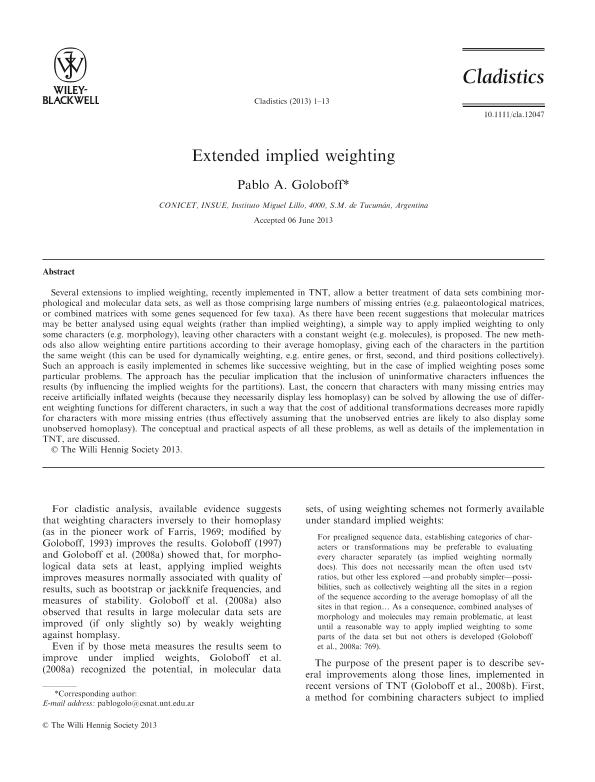Artículo
Extended implied weighting
Fecha de publicación:
07/2013
Editorial:
Wiley
Revista:
Cladistics
ISSN:
0748-3007
Idioma:
Inglés
Tipo de recurso:
Artículo publicado
Clasificación temática:
Resumen
Several extensions to implied weighting, recently implemented in TNT, allow a better treatment of data sets combining morphological and molecular data sets, as well as those comprising large numbers of missing entries (e.g. palaeontological matrices, or combined matrices with some genes sequenced for few taxa). As there have been recent suggestions that molecular matrices may be better analysed using equal weights (rather than implied weighting), a simple way to apply implied weighting to only some characters (e.g. morphology), leaving other characters with a constant weight (e.g. molecules), is proposed. The new methods also allow weighting entire partitions according to their average homoplasy, giving each of the characters in the partition the same weight (this can be used for dynamically weighting, e.g. entire genes, or first, second, and third positions collectively). Such an approach is easily implemented in schemes like successive weighting, but in the case of implied weighting poses some particular problems. The approach has the peculiar implication that the inclusion of uninformative characters influences the results (by influencing the implied weights for the partitions). Last, the concern that characters with many missing entries may receive artificially inflated weights (because they necessarily display less homoplasy) can be solved by allowing the use of different weighting functions for different characters, in such a way that the cost of additional transformations decreases more rapidly for characters with more missing entries (thus effectively assuming that the unobserved entries are likely to also display some unobserved homoplasy). The conceptual and practical aspects of all these problems, as well as details of the implementation in TNT, are discussed.
Palabras clave:
Weighting
,
Parsimony
,
Cladistics
Archivos asociados
Licencia
Identificadores
Colecciones
Articulos(CCT - NOA SUR)
Articulos de CTRO.CIENTIFICO TECNOL.CONICET - NOA SUR
Articulos de CTRO.CIENTIFICO TECNOL.CONICET - NOA SUR
Citación
Goloboff, Pablo Augusto; Extended implied weighting; Wiley; Cladistics; 30; 3; 7-2013; 260-272
Compartir
Altmétricas




